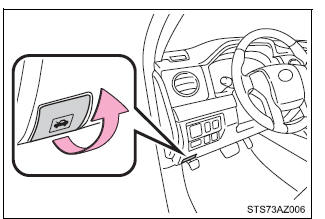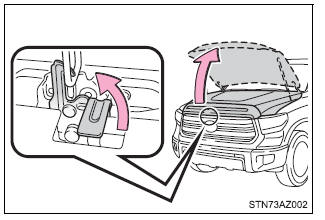If you perform maintenance by yourself, be sure to follow the
correct procedure as given in these sections.
| Items |
Parts and tools |
| Battery condition |
- Warm water
- Baking soda
- Grease
- Conventional wrench (for terminal clamp bolts)
|
| Brake fluid level |
- FMVSS No.116 DOT 3 or SAE J1703 brake fluid
- Rag or paper towel
- Funnel (used only for adding brake fluid)
|
| Engine coolant
level |
|
| Engine oil level |
- "Toyota Genuine Motor Oil" or equivalent
- Rag or paper towel
- Funnel (used only for adding engine oil)
|
| Fuses |
- Fuse with same amperage rating as original
|
| Light bulbs |
- Bulb with same number and wattage rating as original
- Phillips-head screwdriver
- Flathead screwdriver
- Wrench
|
| Power steering
fluid level |
- Automatic transmission fluid DEXRON II or III
- Rag or paper towel
- Funnel (used only for adding power steering fluid)
|
| Radiator and
condenser |
- |
| Tire inflation
pressure |
- Tire pressure gauge
- Compressed air source
|
| Washer fluid |
- Water or washer fluid containing antifreeze (for winter
use)
- Funnel (used only for adding water or washer fluid)
|
| WARNING The engine compartment contains many mechanisms and
fluids that may
move suddenly, become hot, or become electrically energized. To avoid
death
or serious injury, observe the following precautions.
■When working on the engine compartment
■When working near the electric cooling fan or radiator grille
Be sure the engine switch is off.
With the engine switch in the "ON" position, the electric cooling fan
may
automatically start to run if the air conditioning is on and/or the
coolant temperature
is high.
■Safety glasses
Wear safety glasses to prevent flying or falling material, fluid spray,
etc.,
from getting in your eyes. |
| NOTICE ■If you remove the air cleaner filter
Driving with the air cleaner filter removed may cause excessive engine
wear
due to dirt in the air. |
Hood
Release the lock from the inside of the vehicle to open the hood.
1. Pull the hood lock release lever.
The hood will pop up slightly.

2. Pull up the auxiliary catch lever
and lift the hood.

| WARNING ■Pre-driving check
Check that the hood is fully closed and locked.
If the hood is not locked properly, it may open while the vehicle is in
motion
and cause an accident, which may result in death or serious injury. |
|